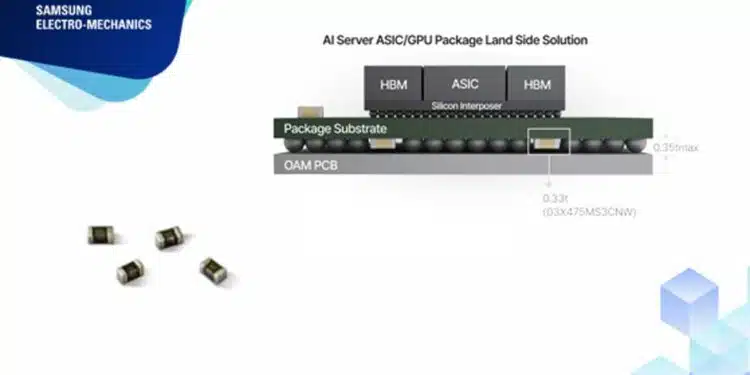Samsung Electro-Mechanics launches a compact, ultra–high-capacitance CL03X475MS3CNW# (0201 inch, 4.7µF, X6S, 2.5V) MLCC ceramic capacitors for ASIC/GPU server applications.
MLCC capacitance demands for AI servers are on the rise
AI server boards are designed to densely pack dozens of high-performance chips (GPU, memory, power IC) and thus require thousands of capacitors. In such cases, there might be difficulties in placing boards unless small-sized MLCCs (e.g. 0201 inch MLCCs) are utilized.
Moreover, the amount of heat generated increases significantly as dozens of ASICs and GPUs are densely integrated in a single rack. Therefore, MLCCs with a high thermal stability equal to or greater than those of X6S are required to ensure a reliable performance at elevated temperatures.
X6S MLCCs have a low fluctuation of capacitance even in high-temperature environments and a nominal leakage currents. In other words, they are advantageous for an extensive operation of AI servers.
AI servers require more than 10 times the number of MLCCs in comparison to standard servers. However, the mounting area for MLCCs remains limited, since they must be placed in close proximity to the GPUs.
In order to solve this issue, ultra–high-capacitance, small-footprint MLCCs can be equipped into the semiconductor package substrate, placing them close to the silicon dies. This would lead to shortened line paths, optimized PCB designs, and an enhanced thermal management. Their slim profile of 0.33t also enables them to be used on the land side.
| Size (inch/mm) | Capacitance | Rated Voltage | TCC | Sample |
|---|---|---|---|---|
| 0201/0603 | 4.7uF | 2.5Vdc | X6S | Available |































